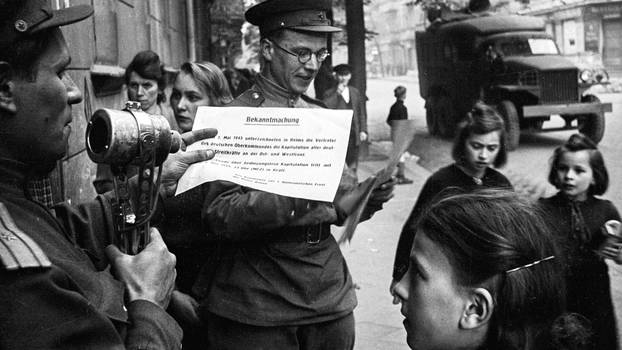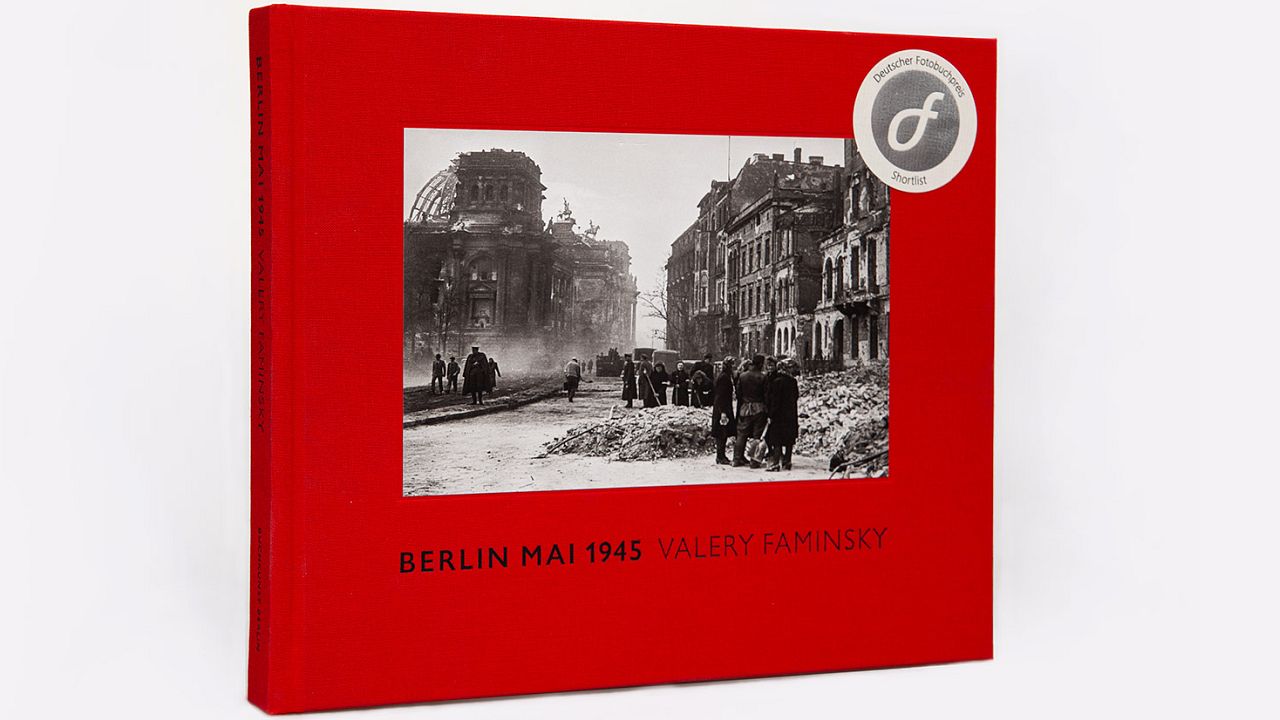
The archive of Valery Faminsky (1914–1993), first discovered in Moscow, is a one-of-a-kind find. From 22 April to 24 May 1945 he captured pictures of Berlin in ruins, of its population, and of the everyday lives of Russian troops.
Valery Faminsky was one of the first soldiers to enter the embattled city in April 1945. His actual task was to document medical provisioning and the logistics of wounded soldier transports for the Red Army’s Institute of Military Medicine. Equipped with this legitimation, he was able to move through the city freely. Driven by his photojournalistic and artistic interest, he violated the official ban on photographing the civilian population, desperation, and destruction.
Shorn of pathos or propaganda but instead imbued with a deeply humanist perspective, Faminsky’s photographs depict the utterly destroyed city, the exhausted population, and the everyday lives of Soviet troops. He shows the deep longing for peace, and his interest was always focused on the individual fates of people on both sides of the front. Foreign workers on their way home, German refugees, civilians looking for their relatives, food, and water. A day-to-day between the ruins composed of extreme living situations. In these pictures people encounter one another as humans, not as victors and defeated.
Contact:
Ana Druga and Thomas Gust, Buchkunst Berlin GbR
Kastanienallee 79, 10435 Berlin, Germany
info@buchkunst-berlin.de
Faminsky returned to Moscow with his photographs on 24 May 1945. He never published them. They were discovered in his estate by his grandchildren, who auctioned off his archive spanning nearly 500 negatives on the Internet. The Ukrainian photojournalist Arthur Bondar, who lives in Moscow, discovered and purchased the archive in 2017 und made them available to the Russian public for the first time.
The archive was exhibited in Germany for the first time in 2019. The opening was held at Franz-Mehring-Platz 1 in Berlin, initiated by the Willi Münzenberg Forum. An illustrated volume was published as an accompaniment to the exhibition.
Herausgeber: Thomas Gust, Ana Druga, Arthur Bondar, Joseph Dilworth
Deutsch, Englisch / 184 Seiten / 114 s/w Abbildungen
Buchkunst Berlin 2018 / ISBN 9783981980585
2. Auflage 03.2020 Foto: Verlag Buchkunst Berlin 2018
